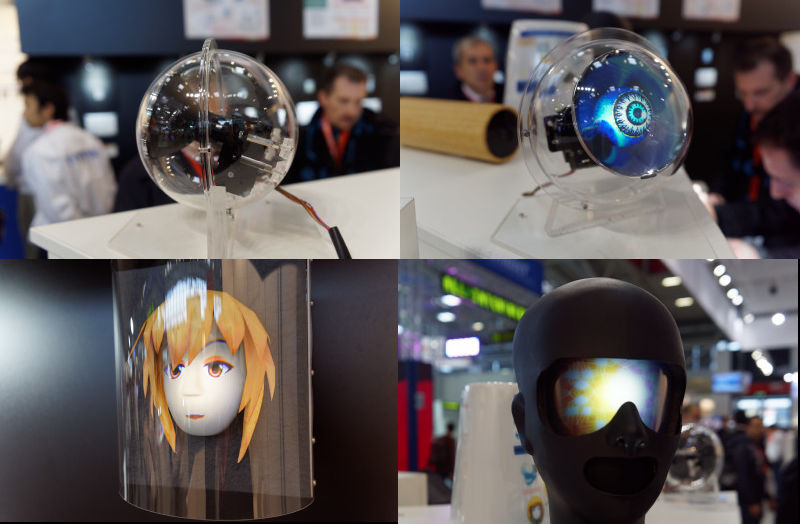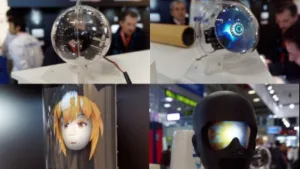Ortustech, owned by Toppan and a company that has developed from the old Casio display business, usually shows some exotic high resolution displays at Electronica, but this year, as the market for the UltraHD 9″ has not yet developed, the company left it at home. At the show, there was an emphasis on new technoloogy, especially in reflective displays.
First, we looked at a high reflectance LCD that has a reference 23% reflectivity and 21:1 contrast ratio and high transmissivity (and nearly 200:1 contrast in transmissive mode). The 3.3″ display with 424 x 240 resolution (146ppi) achieves this high reflectivity with a special low saturation colour filter (from Toppan, of course) that means just 14% of NTSC for reflection and 16% in its transmissive mode. The display was being shown on a bike prototype.
Another high reflectance display was a 5.01″ 800 x 480 LCD with 400cd/m² of output in its transmissive mode, but this time with 50% of NTSC colour. The display is based on the Ortustech ‘New-Blanview’ technology. and applications are expected in autos, motor cycles, construction equipment, ships and industrial use. No specification was being quoted for the COM50H5N01
Also on the booth was a new flexible ‘colour movie paper display’ using colour filter on array technology. Ortustech quotes reflectance of 50% for the display with 21% of NTSC gamut. The display is ‘under development’ and has a 5.7″ diagonal with 640 x 480 resolution (141ppi). Contrast is just 11:1 and colour depth is 6 bit. We asked about the technology being used but we could only find out that it was LCD of “no specified type”.
 This Ortustech low power LCD can show video
This Ortustech low power LCD can show video
There was a prototype 2″ display for EVFs, with 540 x 960 resolution (546 ppi). Described as “super fast response”, the display has an 8ms response time at 25 deg C and a 150ms response time at -25 deg C, not perfect, but much better than typical LCDs which can become unusable at these low temperatures. Colour depth is 24 bit, with 45% of NTSC colour gamut coverage.
A very unusual product was a very, very short throw projector that is tiny and is being sold for retail demonstrations and other specialised applications in Japan. It costs around $100 and there were some eye-catching demonstrations around the booth.
 Ortustech has a mini projector that is being used in retail and DOOH applications in Japan. Image:Meko
Ortustech has a mini projector that is being used in retail and DOOH applications in Japan. Image:Meko

